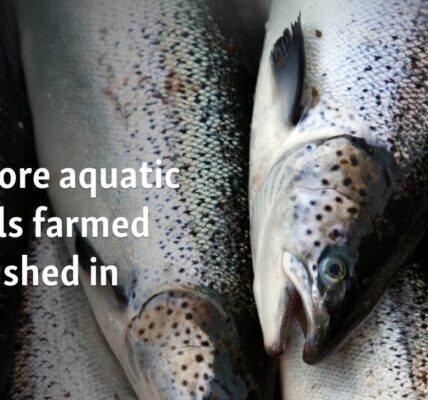Exploring the Concept of Carbon Capture and Its Considerations at the 28th Conference of Parties (COP28)
The topic of fossil fuels’ future is the main focus of the United Nations climate summit in Dubai. There is a push from activists, specialists, and countries to come to an agreement to gradually eliminate the use of oil, gas, and coal which contribute to the Earth’s rising temperatures. On the opposing side, energy corporations and nations with abundant oil reserves are determined to continue drilling for the foreseeable future.
Behind these conversations lie the concepts of carbon capture and carbon removal, which many, if not all, companies are relying on to fulfill their commitments to reach net-zero emissions. Some doubters are concerned that these technologies are being exaggerated in order to enable the industry to continue business as usual.
Prior to the beginning of negotiations, Executive Director of the International Energy Agency, Fatih Birol, emphasized the importance of the industry truly aiding the world in meeting its energy demands and environmental objectives. This requires abandoning the notion that unfeasibly high levels of carbon capture are the answer.
What does carbon capture entail?
Numerous industrial establishments, including coal-burning power plants and ethanol production plants, emit carbon dioxide. In order to prevent these emissions from contributing to global warming, companies can implement machinery to extract the gas from the smokestack and transfer it to underground storage. Despite efforts to decrease emissions, certain industries, like cement production using a CO2-releasing chemical process, will likely continue to produce carbon.
Karl Hausker, a specialist in achieving net-zero emissions at the World Resources Institute, a nonprofit organization focused on climate change, refers to this as a mitigation technology – a method for halting the rise of CO2 levels in the atmosphere. The organization advocates for significant reductions in fossil fuel use and limited use of carbon capture.
The collected carbon is condensed into a transportable state and can be delivered by vehicle or pipeline to an underground location for extended storage.
What does carbon removal involve?
Carbon removal involves removing carbon that is already present in the atmosphere, rather than just capturing it from one source. Currently, this is achieved through efforts like restoring forests, but there is also a movement towards using technology to directly capture carbon from the air using chemical processes.
Carbon removal is crucial for a successful shift to renewable energy on a global scale, which is expected to take a significant amount of time. Despite notable progress in certain countries with the adoption of electric vehicles, gas-powered cars will continue to be in use for the foreseeable future. Additionally, certain sectors such as shipping and aviation present unique challenges in completely eliminating carbon emissions.
Jennifer Pett-Ridge, who oversees the United States’ carbon initiative at the Lawrence Livermore National Laboratory, stated that in order to reduce greenhouse gas emissions, we must not only cease emitting them but also actively remove them from the atmosphere. This is particularly important for the US, the second-largest emitter of greenhouse gases globally.
How are you doing?
According to numerous professionals, the process of capturing and storing carbon using technology is effective, but costly and currently in its initial stages of implementation.
According to the International Energy Agency (IEA), there are approximately 40 significant carbon capture initiatives currently in operation worldwide. These projects collectively capture an estimated 45 million metric tons of carbon dioxide annually. However, this amount is relatively small, accounting for only 0.1% of the total global emissions of 36.8 billion metric tons reported by the Global Carbon Project.
According to the IEA, the track record of carbon capture has been marked by unfulfilled predictions. The organization evaluated ways for the world to reach net zero emissions and determined that a significant reduction in fossil fuel consumption is necessary. While carbon capture plays a minor role, accounting for less than 10%, its progress has been slower than expected.
The rate of new initiatives is increasing, yet they encounter major challenges. In the US, there is resistance towards CO2 pipelines that transport carbon to storage facilities. Safety is a key concern; in 2020, a CO2 pipeline in Mississippi burst, releasing carbon dioxide that displaced breathable air close to the ground and resulted in numerous hospitalizations.
The government at the federal level is currently focused on enhancing safety regulations.
Which individuals or groups endorse the use of carbon capture technology?
According to the American Petroleum Institute, oil and gas will continue to be a vital source of energy for many years. This means that in order for the world to decrease its carbon emissions, there must be a significant implementation of carbon capture technology in various industries. Most oil companies’ strategies for achieving net-zero emissions also involve incorporating some form of carbon capture.
The Biden administration is seeking increased funding for carbon capture and removal, as the United States currently has a higher level of spending in this area compared to other countries.
However, this field relies on subsidies in order to entice private investments. The Inflation Reduction Act offers more extensive tax advantages, such as a $180-per-ton credit for capturing and sequestering carbon from the atmosphere underground. Additionally, the Department of Energy has allocated billions of dollars to aid in the development of new initiatives.
Jessie Stolark, executive director of the Carbon Capture Coalition, a group that advocates for the industry, stated that the current discussion involves expanding the use of a tried and tested technology to a wider range of areas and industries with higher deployment expenses.
There has been an increase in investments. The Environmental Protection Agency is reviewing numerous requests for carbon storage well permits. Furthermore, leaders in areas like Louisiana and North Dakota are actively competing to draw in projects and investments.
Who opposes it?
Certain environmental activists claim that fossil fuel corporations are using carbon capture as a diversion from the urgent task of phasing out oil, gas, and coal.
According to Shaye Wolf, the climate science director at the Center for Biological Diversity, the fossil fuel industry has demonstrated its hazardous and misleading nature.
There are additional issues present. Several initiatives have failed to meet their goals for removing carbon. According to a government report from 2021, out of eight trial projects focused on capturing and storing carbon from coal facilities, only one was operational at the time of publication, despite receiving substantial funding.
Critics also argue that implementing carbon capture technology may only delay the closure of a harmful power plant. This could have a particularly negative impact on disadvantaged and marginalized communities that have been in close proximity to heavily polluting facilities for an extended period of time.
Source: voanews.com




